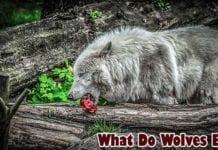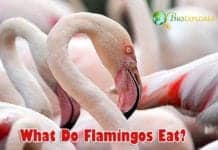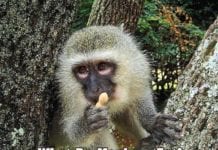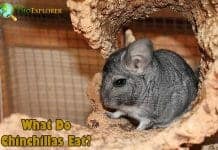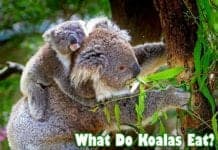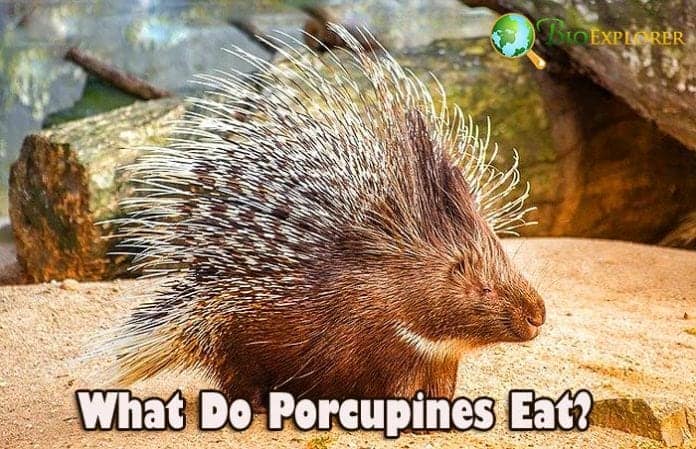
Porcupines are large rodents; whose coats have spiny quills that come in handy to protect them against predators. Porcupines are strictly herbivores, preferring a diet of fruits, foliage, leaves, and twigs.
Most porcupines’ diet changes depending on the season. Bio Explorer explores the insight into the different porcupine species’ diets, how porcupines hunt if they do, when they eat, how often they eat, what they eat porcupines and their role in the animal food chain.
Table of Contents
- Porcupines Diet by Types
- What Do African Brush-tailed Porcupines Eat?
- What Do Asiatic Brush-tailed Porcupines Eat?
- What Do Sumatran Porcupines Eat?
- What Do Cape Porcupines Eat?
- What Do African Crested Porcupines Eat?
- What Do Thick-spined Porcupines Eat?
- What Do North American Porcupines Eat?
- What Do Brazilian Porcupines Eat?
- What Do Mexican Dwarf Hairy Porcupines Eat?
- What Do Stump-tailed Porcupines Eat?
- What Do Bristle-spined Porcupines Eat?
- When Do Porcupines Eat?
- How Often Do Porcupines Eat?
- What Eats Porcupines?
- Do Porcupines Predate on Humans?
- What Role Do Porcupines Play in the Animal Food Chain?
Porcupines Diet by Types
Two main categories of porcupines exist; the Old-World porcupines classified under the family Hystricidae and the New-World porcupines classified under the family Erethizontidae.
- The Old-World porcupines inhabit most of Africa, Asia, and southern Europe.
- The New World porcupines are native to North and Southern America.
- These two types of porcupines are very different from each other. For example, the old-world porcupines are heavily built with rounded heads. They also have flattened or cylindrical spines lining their bodies.
- On the other hand, new-world porcupines are large rodents with rounded heads and blunt noses whose spines that cover their bodies are mixed with long soft hairs.
The following sections will explore the different porcupine species classified under the two distinct categories.
![]()
What Do African Brush-tailed Porcupines Eat?
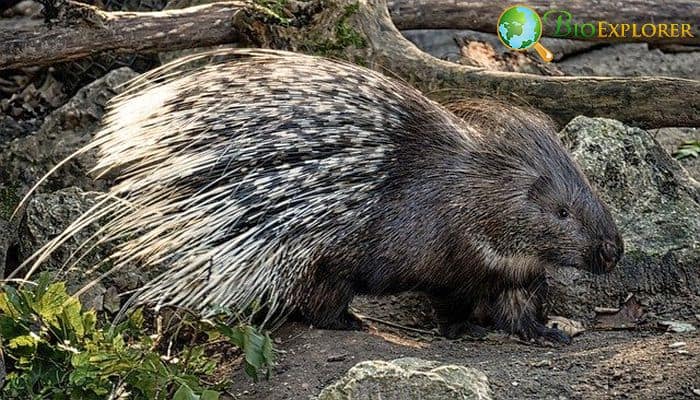
As suggested by its name, the African brush-tailed porcupine is native to the African content. The African regions where this porcupine is found are southern Zaire, the Gambia, and Western Kenya.
| Animalia | Rodentia | Hystricidae | Atherurus | Atherurus africanus |
- This species is classified under the Old-world porcupines. This porcupine is mostly found in crevices, hidden caves, or next to fallen trees. Their preference is the natural-occurring caves, which saves them the trouble of creating their burrows.
- These porcupines are some of the largest rodents, which grow to attain a body length of 36.5 cm to 60cm.
- The African brush-tailed porcupines are mostly herbivorous, whose diet entails tree barks, nodules, fruits, bulbs, and leaves.
- Africa brush-tailed porcupine has also been known to feed on carcasses.
![]()
What Do Asiatic Brush-tailed Porcupines Eat?
The Asiatic brush-tailed porcupine is endemic to southeast Asia. This species is widespread in tropical and subtropical montane forests and shrubland, particularly in dense undergrowth areas.
| Animalia | Rodentia | Hystricidae | Atherurus | Atherurus macrourus |
- The Asiatic brush-tailed porcupine is categorized under the family of Old-world porcupines.
- This porcupine is smaller in size compared to others. The Asiatic brush-tailed porcupine mostly feeds on fruits, grubs, bamboo shoots, vegetation, yarns, taros, and insects. This porcupine has also been evidenced to scavenge on animal bones and horns.
- One hunting strategy to obtain insects is digging them from their hideouts. These porcupines have also been noted to stalk insects.
![]()
What Do Sumatran Porcupines Eat?
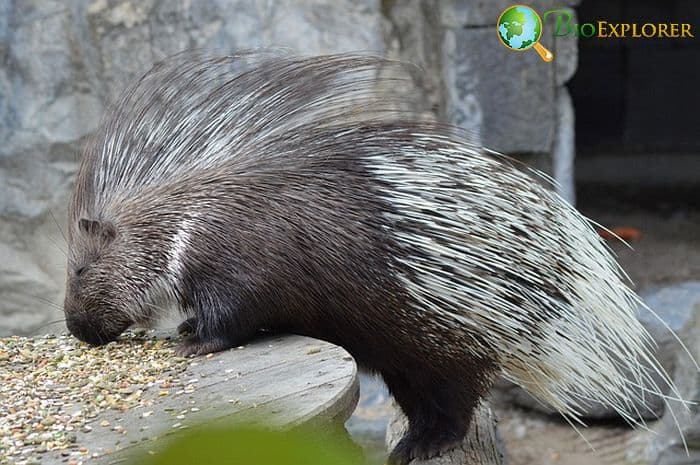
The Sumatran porcupine is found exclusively in the Sumatran Islands, one of the islands that constitute the Indonesian Archipelago, making them a part of the old-world porcupines.
| Animalia | Rodentia | Hystricidae | Hystrix | Hystrix sumatrae |
- These porcupines will often be found inhabiting the Tropical Rainforests in the Sumatran islands, particularly in rocky areas.
- The Sumatran porcupines are mostly herbivorous. Their diet mainly consists of fallen fruits such as mangoes. The Sumatran porcupines have also been observed to eat sugarcane, melons, beans, and peanuts. They also dig underground plants like sweet potatoes and feed on them.
- The Sumatran porcupines have been observed to feed on animal remains to obtain calcium and phosphate, which could be absent from their diets.
![]()
What Do Cape Porcupines Eat?
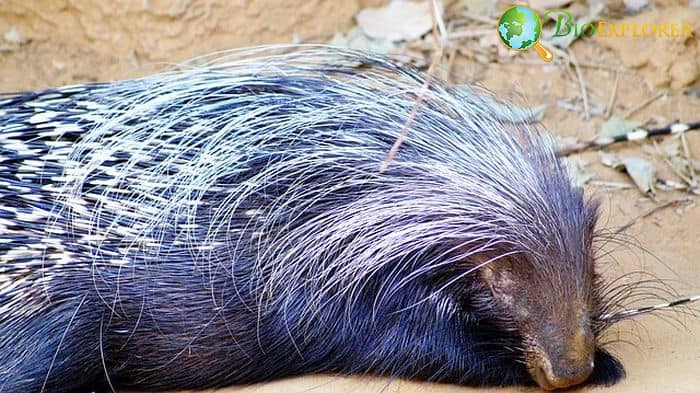
Also termed as the South African porcupines, Cape porcupines are the largest rodents in Africa, classified under Old-world porcupines. They grow up to a length of 3 feet.
| Animalia | Rodentia | Hystricidae | Hystrix | Hystrix africaeaustralis |
- These porcupines are endemic to Africa’s central and southern parts. Their preferred habitats include open areas, preferably caves or crevices.
- The Cape porcupines are mostly herbivorous, preferring a diet of barks, fruits, bulbs, crops, and roots.
- These porcupines have also been documented to eat carrion.
![]()
What Do African Crested Porcupines Eat?
The African crested porcupine (Hystric cristata) is one of the largest porcupines found in wide distribution in North Africa, the Sub-Saharan Africa region, and Italy.
- This porcupine is classified under the Old-world porcupines. This species is mostly found in rocky and hilly habitats in these regions.
- The African crested porcupine is almost entirely herbivorous, preferring a diet of cultivated root crops, bulbs, fallen fruit, or tree barks.
![]()
What Do Thick-spined Porcupines Eat?
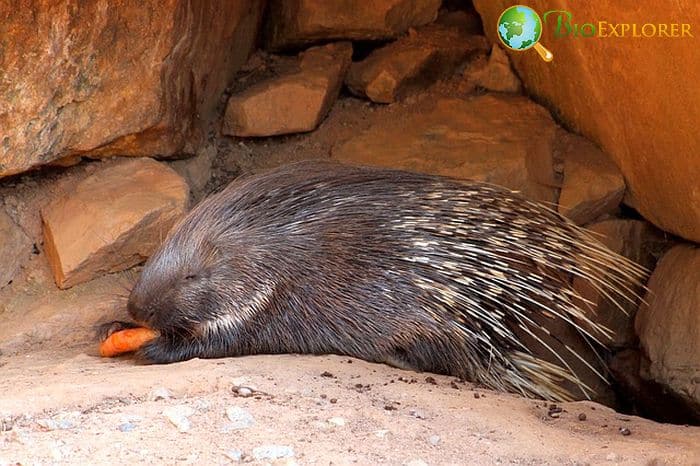
The thick-spined porcupine is endemic to the Indo-Malayan region, particularly in forests and cultivated land.
| Animalia | Rodentia | Hystricidae | Hystrix | Hystrix crassispinis |
- The thick-spined porcupine is a dark brown animal with similar colored quills with a white base and tip. This rodent is classified under the family of Old-world porcupines.
- The thick-spined porcupine is primarily herbivorous, preferring to eat vegetation and fallen fruits. In other cases, this rodent species may feed on meat, often from insects.
![]()
What Do North American Porcupines Eat?
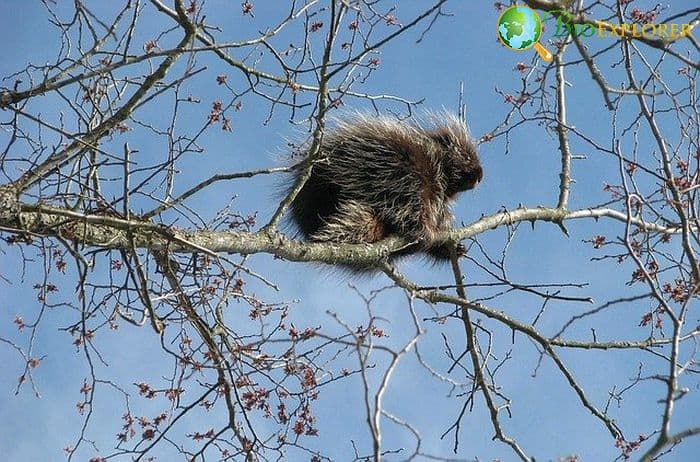
The North American porcupine is a New-world porcupine endemic to North America, as implied by its name.
| Erethizon dorsatum |
- The habitats this rodent prefers include but are not limited to scrubland and forests, particularly coniferous, deciduous or mixed forests.
- The North American porcupine is herbivorous, whose diet entails leaves, clover, skunk cabbage, fruits, buds, leaves, and twigs.
![]()
What Do Brazilian Porcupines Eat?
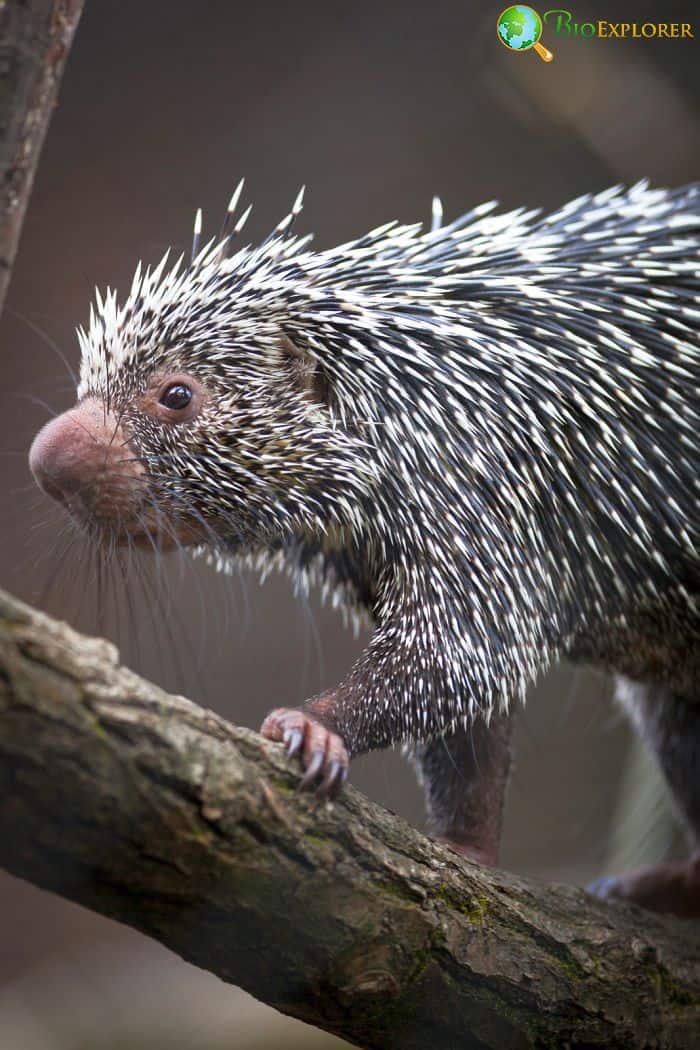
The Brazilian porcupine, like its North American counterpart, is classified as a New-world porcupine.
| Animalia | Rodentia | Erethizontidae | Coendou | Coendou prehensilis |
- The Brazilian porcupine will always be found inhabiting tropical rainforests in the eastern and northeastern regions of South America.
- This rodent is an expert climber with a prehensile tail that comes in handy to grip tree branches while climbing.
- The Brazilian porcupine can grow up to 1.7ft tall and weigh about 11 pounds.
- This rodent is omnivorous. Its diet entails fruits, barks, leaves, shoots, and small animals.
- Hunting for prey is facilitated through stalking.
![]()
What Do Mexican Dwarf Hairy Porcupines Eat?
Mexican dwarf hairy porcupines mostly inhabit central Mexico. Their distribution can stretch up to the Isthmus of Panama.
| Animalia | Rodentia | Erethizontidae | Sphiggurus | Sphiggurus mexicanus |
- Mexican dwarf hairy porcupines mainly inhabit mixed-mountain forests, rainforests, and scrubland.
- Regarding its diet, the Mexican dwarf hairy porcupine is herbivorous. Its diet mainly consists of tree leaves, particularly those of genera Brosimum, Ficus, and Inga. This porcupine also eats buds, sweet potatoes, fruits, seeds, and carrots.
![]()
What Do Stump-tailed Porcupines Eat?
The stump-tailed porcupines (Coendou rufescens) are New World, medium-sized porcupines, distinguished from others by their non-prehensile tails and a reddish hue.
- The stump-tailed porcupine inhabits the Andean forests, where it obtains its food.
- The stump-tailed porcupine has been documented to feed on the infructescence of the Trumpet tree.
![]()
What Do Bristle-spined Porcupines Eat?
The bristle-spined porcupines are also referred to as the thin-spined porcupines.
| Animalia | Rodentia | Erethizontidae | Chaetomys | Chaetomys subspinosus |
- The Bristle-spined porcupines are unique porcupine species with hairs that closely resemble bristles and not spines, which gives clues to their name.
- These porcupines are mostly brown, but they can also take up a grey hue.
- This species’ members mostly inhabit forest edges on Brazil’s Atlantic forests, hence its classification as a new-world porcupine.
- The bristle-spined porcupines are herbivorous, preferring to feed on leaves. These porcupines also consume fruits and nuts. They prefer living in an area with a rich abundance of cocoa trees, which increases their access to cocoa nuts.
![]()
When Do Porcupines Eat?
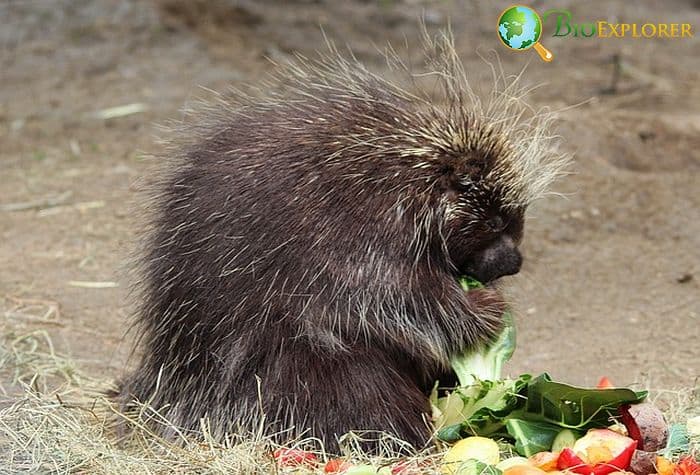
Most porcupines tend to display nocturnal tendencies, meaning they rest during the daylight hours.
- Their preferred rest areas are hollow trees, underground burrows, caves, or crevices.
- During nightfall, porcupines come out from their hideouts to forage for food and eat.
- Other porcupines, mainly the stump-tailed porcupine, were observed at the Sangay National Park in Ecuador to display both diurnal and nocturnal tendencies.
![]()
How Often Do Porcupines Eat?
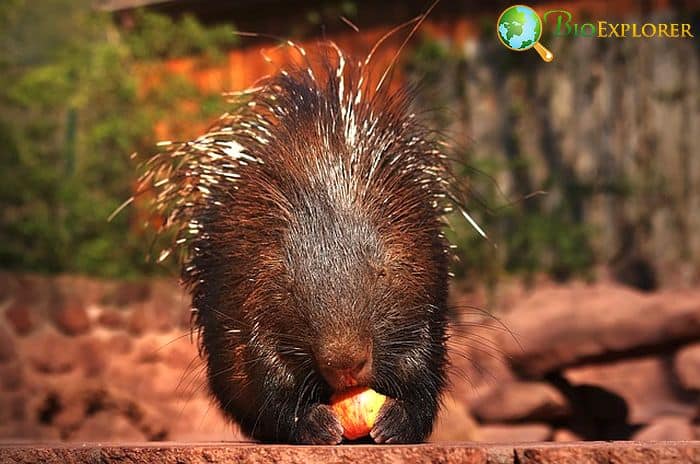
Porcupines tend to eat as often as possible depending on food availability.
- Porcupines spend a more significant portion of their day feeding and resting. In cases where porcupines are exposed to the harsh winter season, these rodents tend to slow down their metabolism and use up their fat reserves.
- More specifically, by the end of the winter season, the Alaskan porcupine loses about 30 percent of its fat reserves.
![]()
What Eats Porcupines?
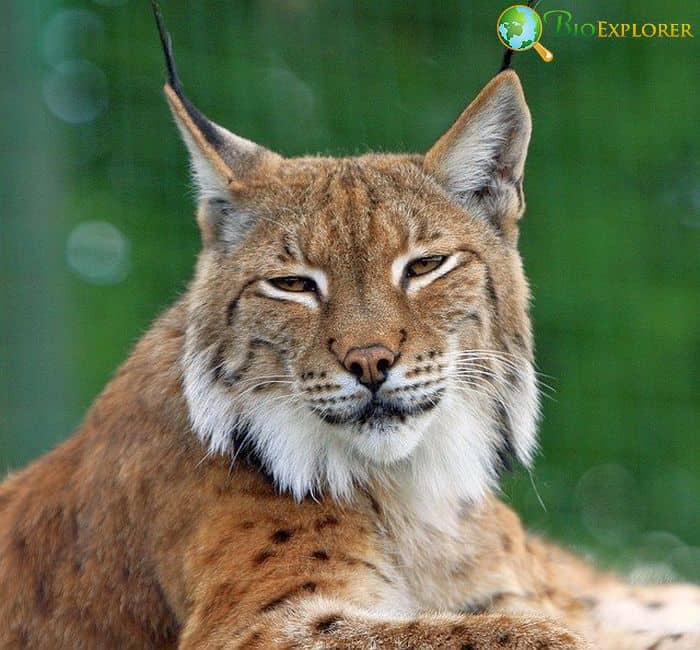
Despite their robust defensive mechanism, some organisms still manage to predate on porcupines. Examples of organisms that consider porcupines to be a great source of nutrients include but are not limited to bobcats, pumas, ocelots, mountain lions, coyotes, lynx, wolverines, wolves, the great horned owl, and fishers.
![]()
Do Porcupines Predate on Humans?
Porcupines do not predate humans. However, these rodents have been shown to out their quills on predators or any organism they feel threatened by, including humans.
![]()
What Role Do Porcupines Play in the Animal Food Chain?
Porcupines serve as prey, predators, and scavengers in the animal food chain.
- Porcupines offer a great source of nutrients to organisms that predate them, such as mountain lions, wolves, bobcats, pumas, jaguars, wolverines, coyotes, and lynx, among others.
- Some porcupines feed on insects and a vast range of small animals. In this sense, they help regulate the local population of these organisms.
In their scavenging role, some porcupine species help promote a clean-up of the environment. In this sense, porcupines help create a great environment that allows other organisms to thrive and propagate.
![]()


